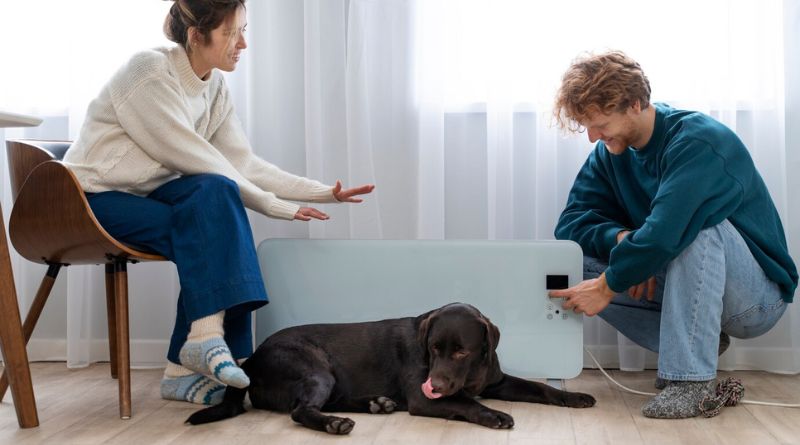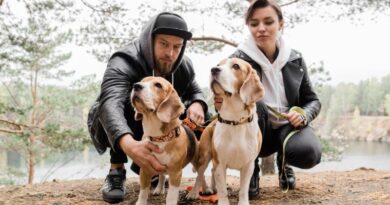Welcome to our comprehensive guide on effective ways to prevent dog peeing indoors. Dealing with indoor accidents can be frustrating for pet owners, but rest assured, there are numerous strategies to address this common issue. Understanding why dogs urinate indoors and employing practical preventive measures can significantly reduce these incidents. In this article, we’ll explore a range of proven techniques and tips that will help you create a conducive environment for your furry friend and minimize indoor accidents.
From behavioral training methods to environmental adjustments, we’ll delve into actionable steps to curb unwanted urination habits. Whether you’re a new dog owner or seeking solutions for a long-standing problem, this guide aims to equip you with valuable insights and strategies to maintain a clean and harmonious living space for both you and your beloved pet.
Effective Ways to Prevent Dog Peeing Indoors
1. Establishing a Consistent Routine

Establishing a consistent routine is the cornerstone of preventing indoor dog peeing. Dogs thrive on predictability, so a regular schedule for feeding, walks, and bathroom breaks is crucial. By feeding your dog at the same times daily, you regulate their digestion, making bathroom breaks more predictable.
Similarly, consistent walks not only provide exercise but also give ample opportunities for outdoor bathroom breaks, reducing the likelihood of accidents indoors. Establishing a routine also includes designating specific areas outside for your dog to relieve themselves, reinforcing the association between outdoors and bathroom time.
Consistency instills a sense of security in your dog, reducing anxiety-related accidents. Through this routine, you’re not just preventing indoor peeing but also fostering a harmonious bond based on trust and predictability.
2. Positive Reinforcement Training Methods
Positive reinforcement training methods are a powerful tool in preventing indoor dog peeing while nurturing a strong bond between you and your pet. This technique involves rewarding desired behaviors—like outdoor peeing—with treats, praise, or playtime. When your dog eliminates outside, lavish them with enthusiastic praise and treats to reinforce this behavior positively.
Consistency is key; timing the reward immediately after they pee outdoors helps them associate the action with the reward. Avoid punishing accidents indoors; instead, redirect focus to desired behavior by taking them outside immediately. This method builds a positive connection between outdoor peeing and positive experiences, motivating your dog to repeat this behavior.
Through patience and consistency, positive reinforcement not only prevents indoor accidents but also strengthens the communication and trust between you and your furry companion.
Also Read: 8 Most Popular Types of Shepherds
3. Creating a Dog-Friendly Environment Indoors
Creating a dog-friendly environment indoors is pivotal in preventing indoor peeing and fostering a comfortable space for your pet. Start by establishing designated areas for your dog, like a cozy bed or a specific spot for meals, to give them a sense of ownership and security. Remove any potential stress triggers that might cause accidents, such as loud noises or crowded spaces.
Invest in appropriate toys and mental stimulation to keep your dog engaged and less prone to anxiety-related accidents. Consider using pet gates or barriers to limit access to certain areas until they are fully trained. Regular cleaning and odor removal of any previous accidents are essential to prevent re-marking.
By tailoring your home to suit your dog’s needs and reducing potential stressors, you create a calm and welcoming indoor environment that minimizes the likelihood of indoor peeing.
4. Prioritizing Health and Well-being

Prioritizing your dog’s health and well-being is a fundamental aspect of preventing indoor peeing. Regular veterinary check-ups are crucial to rule out any underlying medical conditions that might contribute to accidents indoors. Ensuring your dog’s diet is balanced and meets their nutritional needs helps regulate their system, reducing the frequency of urination.
Adequate hydration is equally important; make fresh water readily available to discourage excessive indoor peeing due to dehydration. Additionally, exercise plays a vital role in your dog’s physical and mental health, contributing to better bladder control and reducing stress-related accidents.
By maintaining your dog’s overall health through proper nutrition, hydration, exercise, and regular vet visits, you not only prevent indoor peeing but also promote a happy, healthy, and well-balanced life for your furry companion.
5. Patience and Consistency in Training
Patience and consistency form the bedrock of successful dog training, particularly in preventing indoor peeing. Training takes time, and each dog learns at its own pace, so patience is key. Consistency in your approach to training—using the same commands, schedule, and positive reinforcement methods—helps your dog understand what’s expected.
Remember, accidents may happen despite your efforts; it’s essential not to get discouraged or reprimand your dog. Instead, stay patient and reaffirm consistent training techniques. Dogs respond best to routines, so maintaining a steady schedule for bathroom breaks and reinforcing positive behaviors ensures clarity for your pet.
By patiently sticking to a consistent training regimen, you’re guiding your dog toward success in learning where it’s appropriate to relieve themselves, fostering a trusting and communicative relationship along the way.
6. Troubleshooting Accidents Effectively
Effectively troubleshooting accidents is essential in the process of preventing indoor dog peeing. First and foremost, refrain from punishing your dog for accidents; instead, focus on immediate action. Clean up accidents promptly using enzymatic cleaners to completely remove odors and discourage re-marking.
Analyze the circumstances leading up to the accident—was the routine disrupted, or was there a change in the environment? Use this information to adjust your training approach accordingly. If accidents persist, consult a veterinarian to rule out any underlying health issues.
Additionally, consider reinforcing training by supervising your dog more closely or adjusting the frequency of bathroom breaks. By troubleshooting accidents proactively and using them as learning opportunities, you refine your preventive strategies, ultimately guiding your dog toward consistent and successful indoor bathroom habits.
Also Read : 10 Cutest Dog Breeds to Keep as Pets
7. Fostering a Family-wide Approach to Prevention

Fostering a family-wide approach to preventing indoor dog peeing creates a cohesive environment for effective training. Consistency among all family members in implementing training techniques and maintaining routines is crucial. Ensure everyone understands and follows the same rules, commands, and schedules for feeding, walks, and bathroom breaks.
Encourage family members to participate in positive reinforcement training, reinforcing good behavior with praise and rewards consistently. Educate everyone on the importance of not punishing accidents and instead redirecting focus to desired behaviors. Consistency in approach minimizes confusion for your dog, accelerating the learning process.
Holding family meetings or discussions about training progress and challenges can unify efforts and ensure everyone is on the same page. By cultivating a family-wide commitment to prevention, you create a supportive environment that maximizes the success of preventing indoor dog peeing.
Conclusion
In conclusion, preventing dog peeing indoors requires patience, consistency, and a holistic approach. By understanding your dog’s behavior, implementing effective training methods, addressing potential medical issues, and creating a conducive environment, you can significantly reduce incidents of indoor urination. Remember, each dog is unique, and finding the right combination of strategies might take time.
With persistence and positive reinforcement, you can foster good habits and create a harmonious living space for both you and your furry companion. By implementing the insights shared in this guide, you’re on the path to minimizing indoor accidents and enjoying a happy, accident-free life with your beloved pet.
FAQs
Dogs may pee indoors due to various reasons such as inadequate house training, medical issues, anxiety, or territorial marking. Understanding the underlying cause is crucial in implementing targeted solutions to address this behavior and prevent future accidents.
To prevent indoor peeing, establish a consistent routine for outdoor potty breaks, use positive reinforcement to encourage desired behavior, address any potential medical concerns promptly, and create a designated toilet area within your home that’s easily accessible for your dog.
While any breed can experience indoor accidents, some breeds might require more patience and training due to their size, temperament, or sensitivity. It’s essential to tailor training methods to suit individual breed traits and tendencies to effectively prevent indoor peeing incidents.







